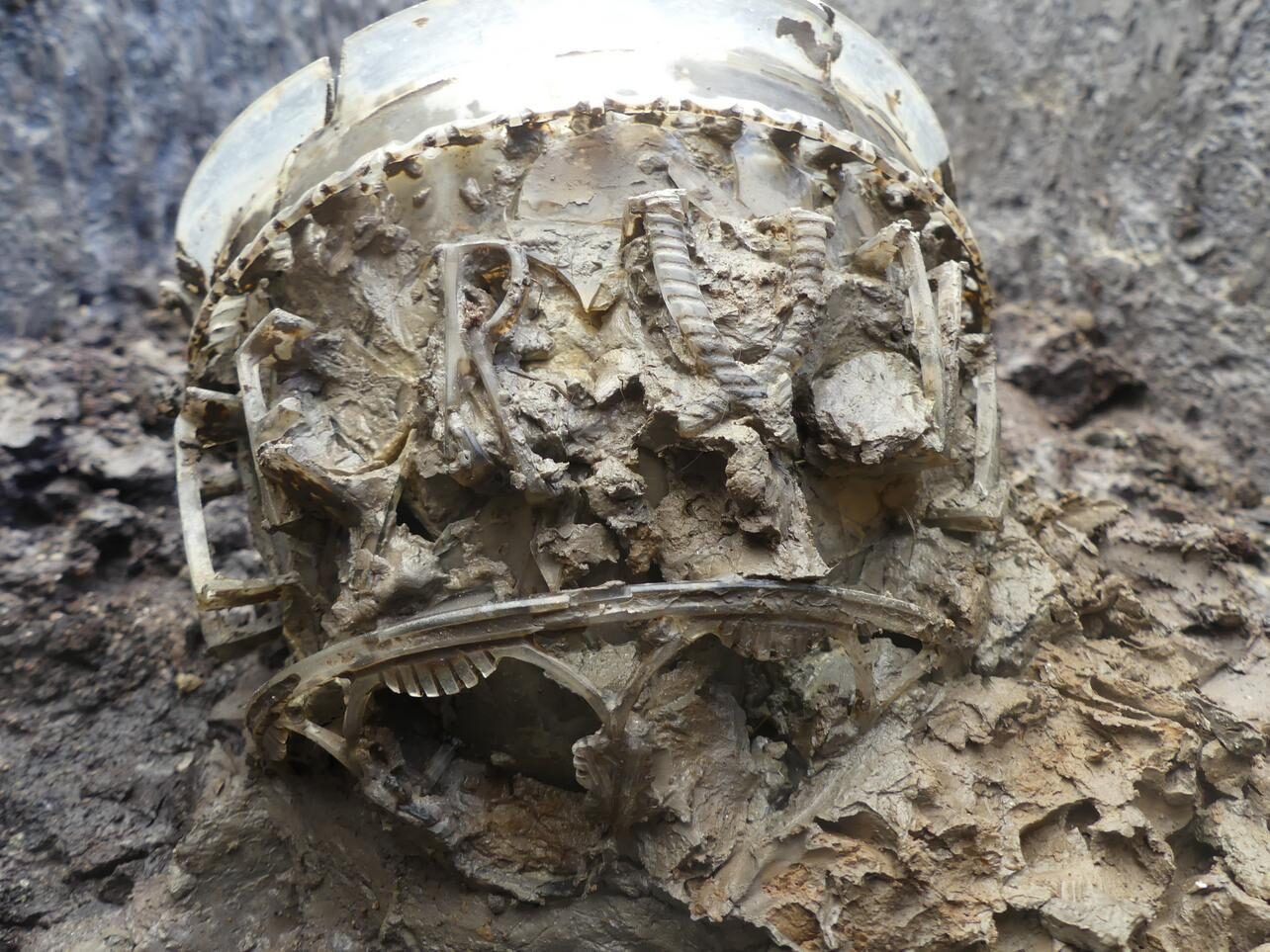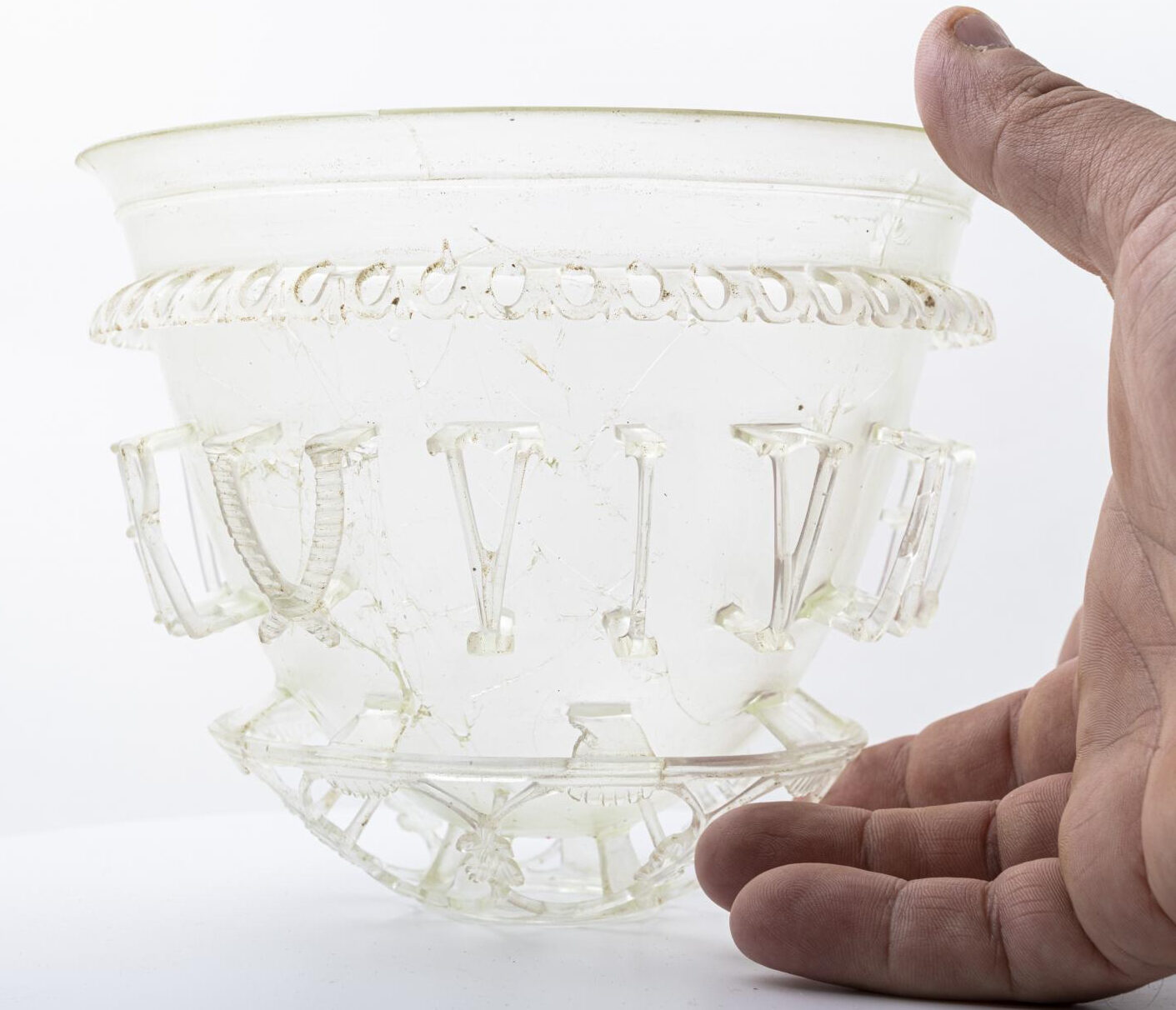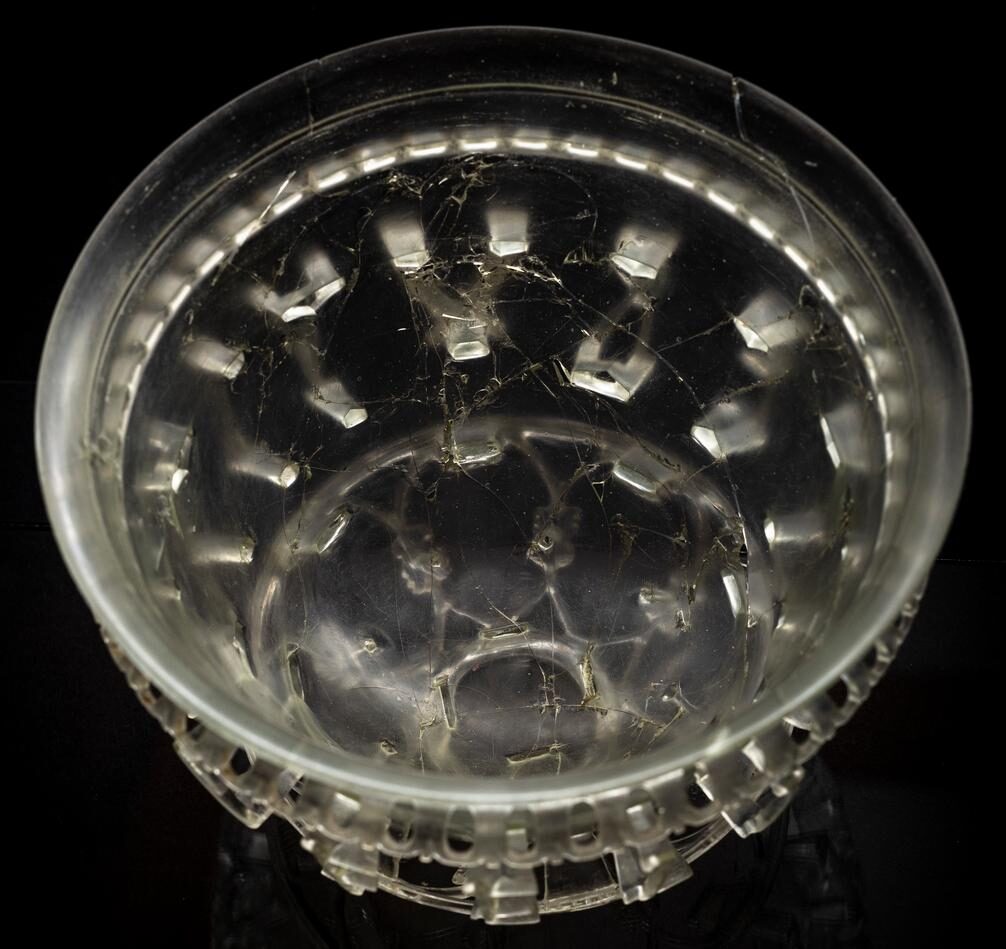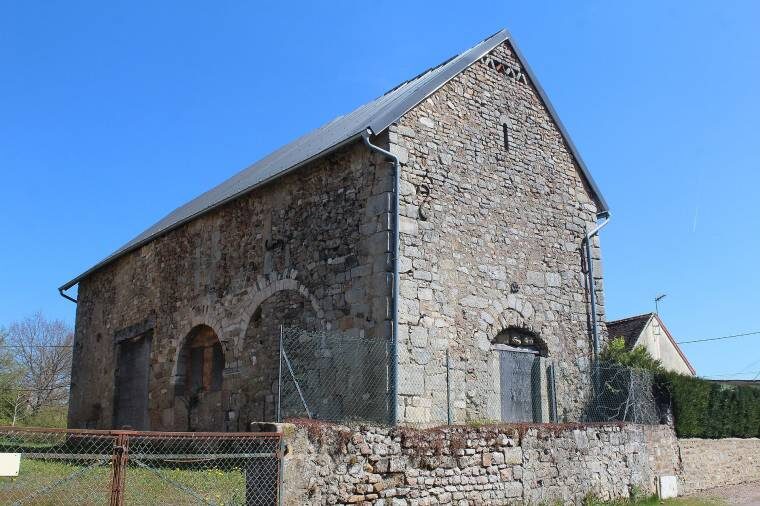In 2020,
Inrap, in collaboration with the Autun city Archaeology Service (Drac Bourgogne-Franche-Comté), excavated part of the necropolis located
near the former Paleochristian church of Saint-Pierre-l'Estrier. A stone sarcophagus yielded
a remarkable cage cup, or "diatretic vase," dated to the 4th century CE. Complete but very fragmentary, it was entrusted to the Römisch-Germanisches Zentralmuseum in Mayence (Germany). Following its restoration and study, this exceptional piece has returned to Autun.

Vase in situ
Only a few of the rare known diatreta were found in archaeological context. These Roman glass art masterpieces
sculpted from a block of glass required several months of work by an experienced glass worker. As prestige objects, such vases were offered to prominent figures, probably close to the Imperial power. This small bowl (15 cm diameter, 12.6 cm high), leans slightly to the side and its edge is not perfectly circular.
A Latin inscription VIVAS FELICITER ("Live in bliss"), overlain by a band of ova (egg-shaped motifs), is present on the central band.
The foot of the vase is decorated with eight carved ovals forming a heart with one circular rosette.

© Hamid Azmoun/InrapRestored vase
The inscription, consisting of large carved letters, is very rare in the Antique contexts. All but one of them are very well preserved, and a separator in the form of a ridged "V" marks the end of the phrase.
The vase displays a surprising fault: the letter C seems to have been added later. The glass from which this repair was made is chemically identical but visually different as its surface is matte, almost milky. The artist made a mistake during the fabrication of this letter. Some glass was thus melted to replace the C, which probably contributed to this glass's unusual appearance and texture. Having disappeared during Antiquity, only a small part of it remains.

© Hamid Azmoun/Inrap
The vase was probably displayed on a stand to ensure its stability and preserve its contents.
Impregnation analyses were used to identify the composition of these contents, revealing a mixture of oils, plants and flowers, and gray amber. An intestinal concretion of the sperm whale, gray amber is generally collected on beaches. Its origin was long debated before it was finally understood during the 18th century. This extremely rare and precious material sometimes called "sea truffle" or
"whale vomit" is used for its aromatic and medicinal properties. Aëtius of Amida, a Greek physician living at the turn of the 5-6th centuries CE, mentioned it as an ingredient in a "nard," a perfume used in the church. Analyses of the diatretic vase show that it is currently the earliest archaeological evidence for the use of this very rare substance.The necropolis of the first Christians of Autun

The former Paleochristian church of Saint-Pierre-l'Estrier

© GoogleLocation of the church can be found in the centre of the map
The necropolis in which the diatretic vase was discovered functioned from the start of the 3rd to the middle of the 5th century, with
most of the graves dating to the 4th century. Ancient texts also indicate that the first bishops of Autun were inhumed in this vast mortuary space covering three hectares. Christians were thus likely among the deceased buried there, along with individuals of other Antique religions. Around fifteen lead coffins and six stone sarcophagi were uncovered.
These graves contained very few but prestigious artifacts: gold thread and Tyrian purple textiles, amber pins, and gold jewelry. The most beautiful piece is the diatretic vase, found at the feet of one of the deceased.
Comment: It seems the discoveries at Autun just kept coming, IN-24 reports: Inrap provides more images of the location and exquisite finds at Autun:
- Prittlewell: Stunning artefacts discovered in Anglo-Saxon nobleman's burial chamber in Southend-on-Sea, England
- Bronze Age Britons were riddled with parasites but had the finest of fabrics
- Ireland's high crosses: Medieval religion, art and engineering
- Staffordshire hoard revealed to be most important Anglo-Saxon find in history
- Rare warrior tomb filled with bronze age wealth and weapons
- Mystery of 2,000-year-old Antikythera 'computer' may be closer to being solved
- Staffordshire hoard revealed to be most important Anglo-Saxon find in history
And check out SOTT radio's: